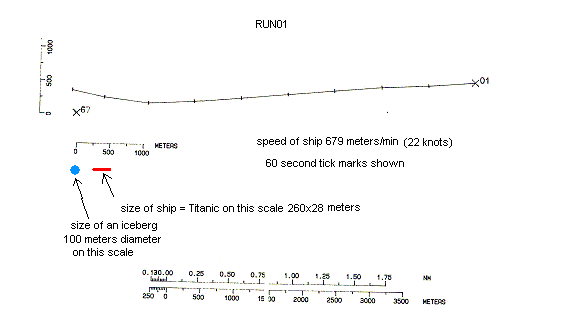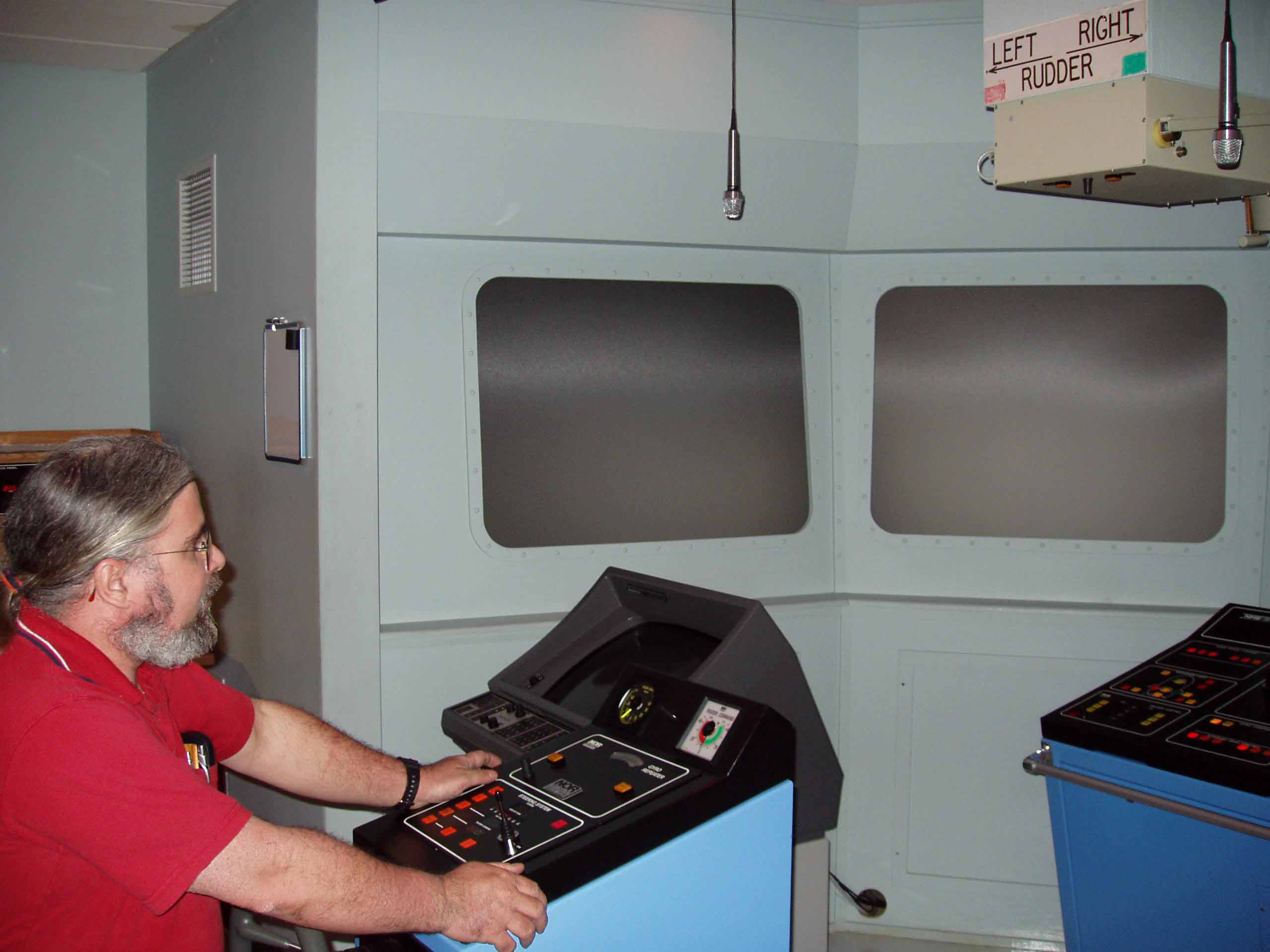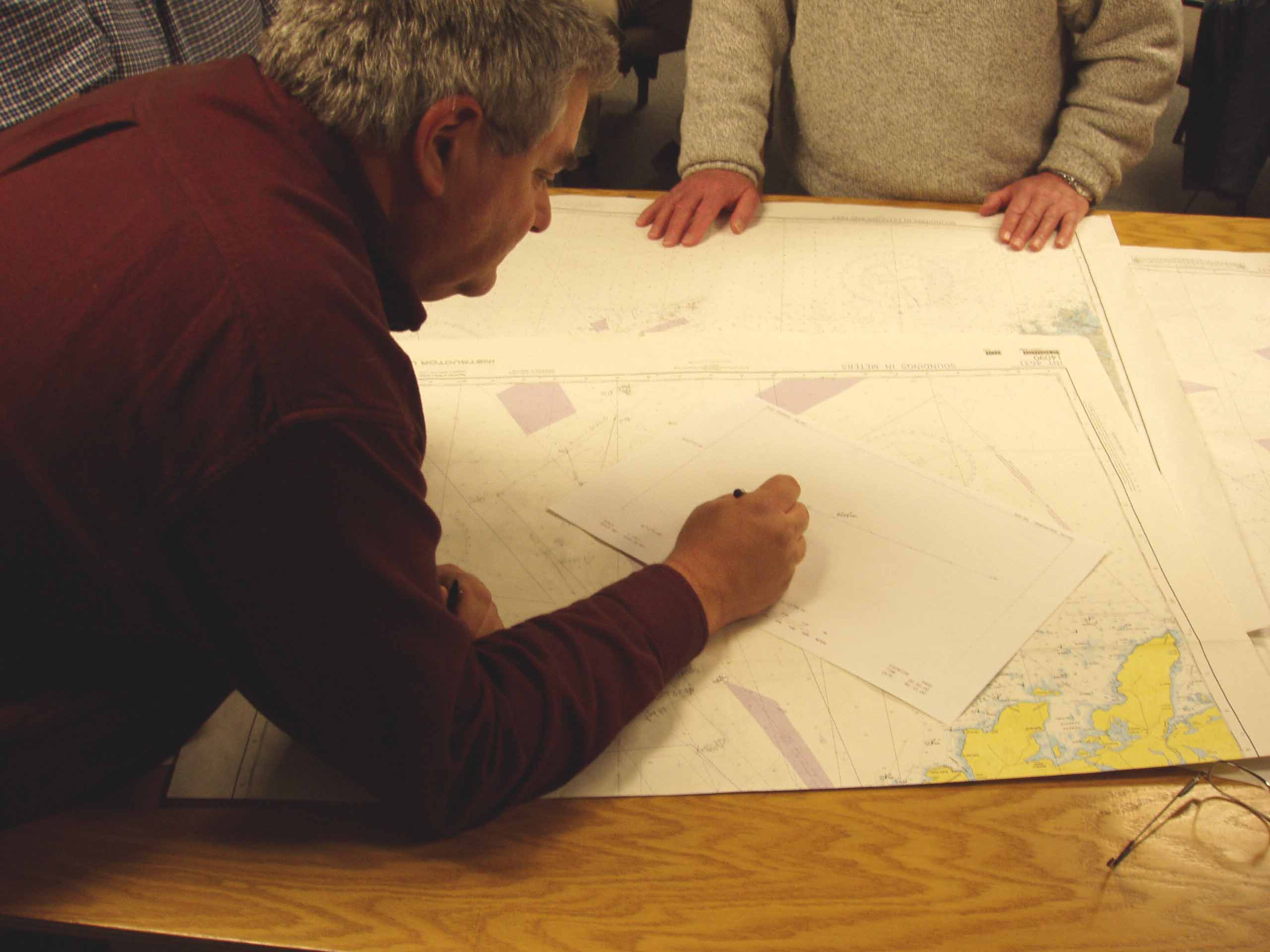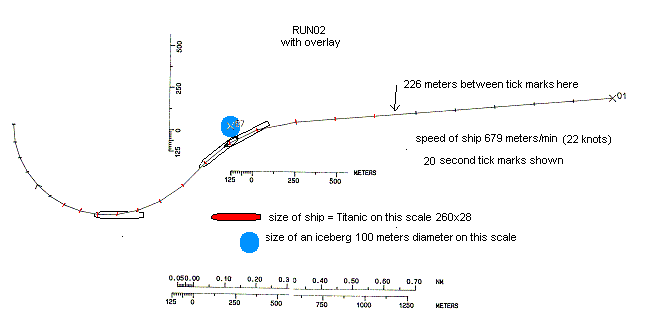
First test, to scale: Attempt to avoid the obstruction
Shows speed of ship, scale of distances horizontally and
vertically, relative size of an Olympic class ship, and size of a mass of
ice 100 meters diameter.
|
Initial heading in simulation was 265T. If the ice mass was as large as
shown, the port-around would have resulted in "a close shave" as Fleet or
Lee had said. The bow of our simulated ship would not have contacted the
above water part of the ice, but the stern would have come very close,
within a few feet.
If there were an underwater ice shelf present, the ship may very well have
run aground on it. But unless there were a break off in contact, it would
have gone way up the stern. The port helm was not enough to overcome the
angular momentum of the initial hard-astarboard until much later. There was
quite a bit of overshoot before she started to turn back. The speed dropped
off quite a bit too. Did anyone call for the engines to be cut? I didn't
think we did that.
Sam Halpern
|



